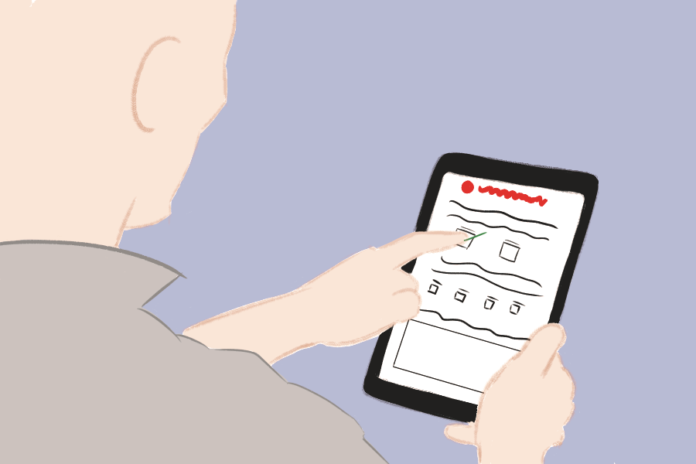The UC Davis Health study showed significant improvement in the detection of psychosis compared to those screened using only clinical judgment
By KATIE HELLMAN — science@theaggie.org
In a recent study conducted by UC Davis Health and published in the Journal of the American Medical Association (JAMA) Psychiatry, completing a 21-question survey more than doubled the rate at which young people were able to be correctly identified as having an increased risk of psychosis compared to those who did not take the questionnaire prior to their medical visit. Though the survey did not reduce the time between the initial presentation of symptoms and the beginning of treatment, it marked a significant improvement in psychosis detection.
“In this cluster randomized clinical trial, a population-based technology-enhanced screening plus clinician education identified more individuals with psychosis spectrum disorder than clinician education alone,” the study reads.
The study consisted of information from the surveys, which were taken on tablets by people in 10 community clinics and four California school sites. Some individuals were subject to active screening of psychosis symptoms, where people between 12 and 30 years of age filled out the PQ-B (Prodromal Questionnaire, Brief Version) before an appointment with a mental health care provider.
Cameron S. Carter, the senior author of the paper, is a professor of psychiatry and psychology and the director of the UC Davis Health Imaging Research Center and the Behavioral Health Center for Excellence. He discussed the benefits of applying a questionnaire in the detection of psychosis for patients.
“Screening for suicide risk and depression and anxiety has been very successful in primary care,” Carter said via email. “Very brief screens (e.g. PHQ 9 [Patient Health Questionnaire 9] for depression) have been incorporated into the medical record as part of routine health assessment. I see a future, when we have a slightly more efficient screening tool, when the same approach with a psychosis screen will become standard in mental health and general medical settings.”
Questions that were asked in the questionnaire included, “Do familiar surroundings sometimes seem strange, confusing, threatening or unreal to you?” and “Have you seen things that other people can’t see or don’t seem to see?” If an individual received a score of 20 out of 105 or above on the test, they were offered a referral to an early psychosis clinic.
Tara A. Niendam, the first author of the study and the executive director of the UC Davis Health Early Psychosis Programs, explained the functionality of the questionnaire.
“We can use [the questionnaire] to detect unusual experiences or thoughts that individuals may be having and how much those thoughts distress them,” Niendam said. “That’s really what signals to us as clinicians that something requires attention.”
Other participants in the study received treatment as usual, meaning they were screened using clinical judgment without incorporating the questionnaire. Participants were referred to an early psychosis clinic if deemed appropriate by clinicians.
“By doing [the questionnaire] universally, we are not relying on clinical judgment or the person’s level of comfort in reporting it,” Niendam said. “We’re getting past some of those issues as well as stigma, which means being afraid of disclosing the things that they’re experiencing for fear of judgment by others.”
Results from the study revealed that the detection rate of psychosis spectrum disorders for participants who were actively screened was about doubled. The rate was reported to be 5.6% compared to 2.6% in those who did not take the questionnaire.
Even though the active screening methods provided earlier detection, there was no statistically significant difference in the duration of untreated psychosis. This is most likely due to delayed access to the mental health system in the U.S, according to the study.
Psychosis is typically more severe if it takes longer to treat symptoms after their initial onset, according to previous studies. The National Institute of Mental Health states that approximately 100,000 new cases of psychosis are diagnosed each year in the U.S. and it typically begins when a person is in their late teens to mid-twenties.
Both Niendam and Carter hope earlier detection of psychosis symptoms through questionnaires like the PQ-B can promote earlier treatment of psychosis before it becomes too severe. Carter also said that psychosis is not as rare as many people think it is.
“When we look at incidence rates in our community, they can range anywhere from 81-272 [cases] per 100,000 [people],” Niendam said. “A better way to think about it is that in Sacramento County, over 1,000 people are having the onset of psychosis every year.”
The Early Psychosis Programs at UC Davis Health offer a free online screening survey for those concerned about themselves or others experiencing signs of psychosis.
“Many students, if they’re experiencing these symptoms, are worried about what it means for them,” Niendam said. “There’s hope; don’t be afraid to ask for help if this is something you’re experiencing.”
Written by: Katie Hellman — science@theaggie.org





